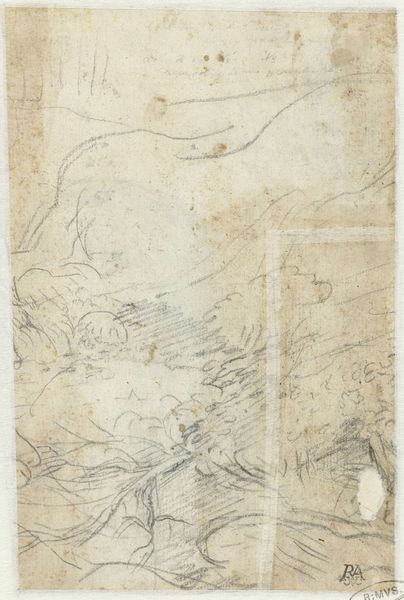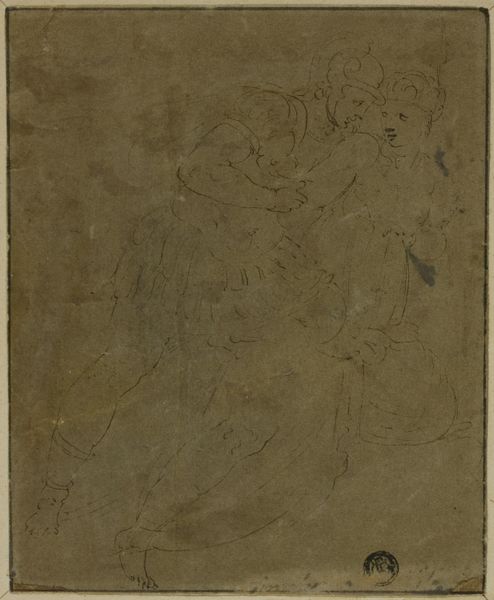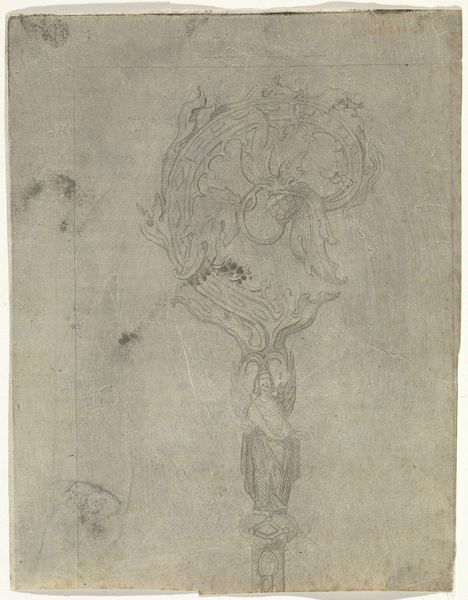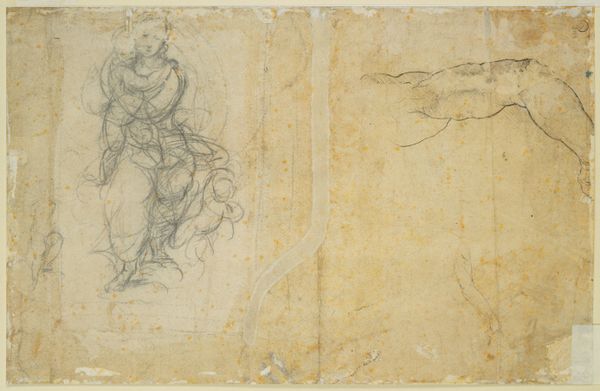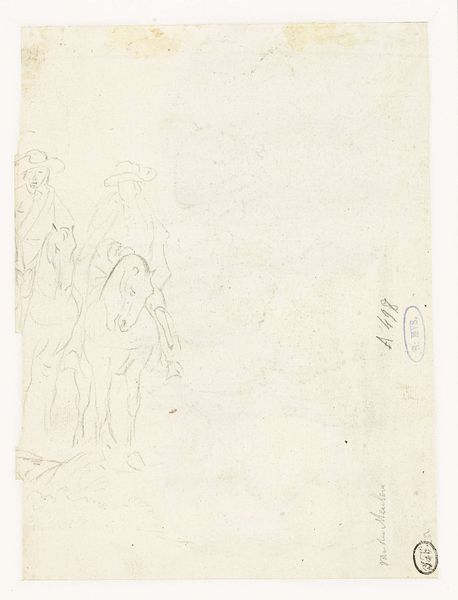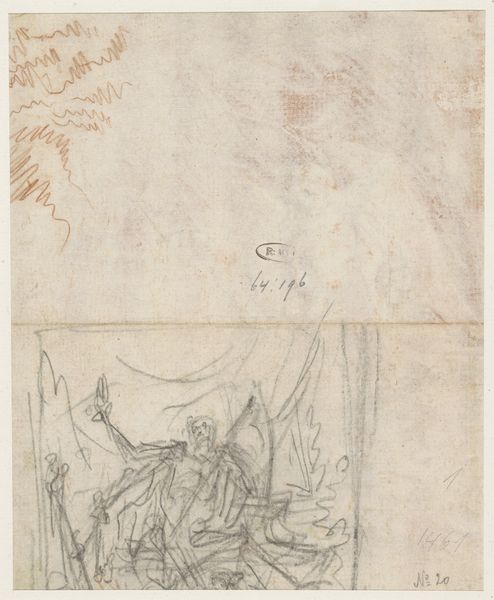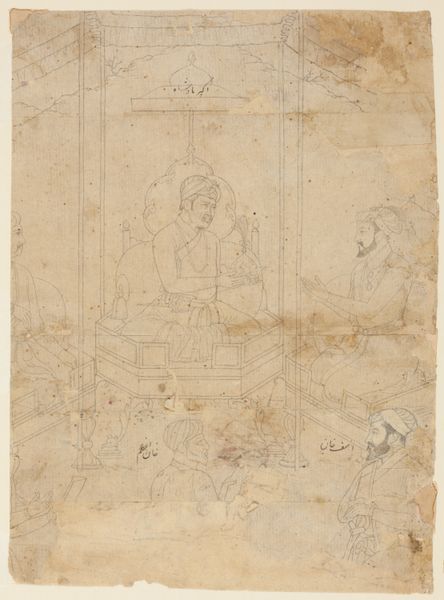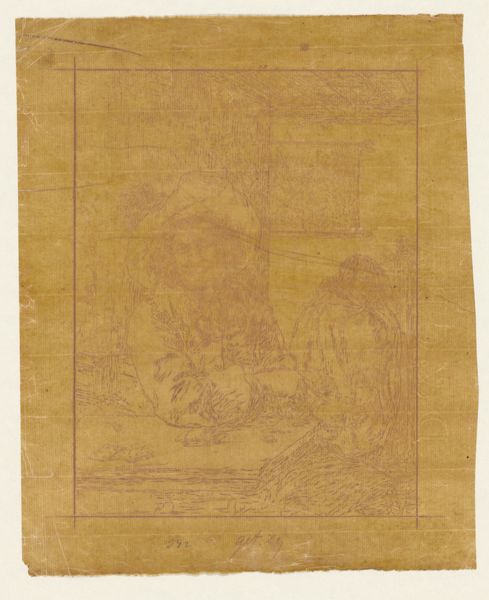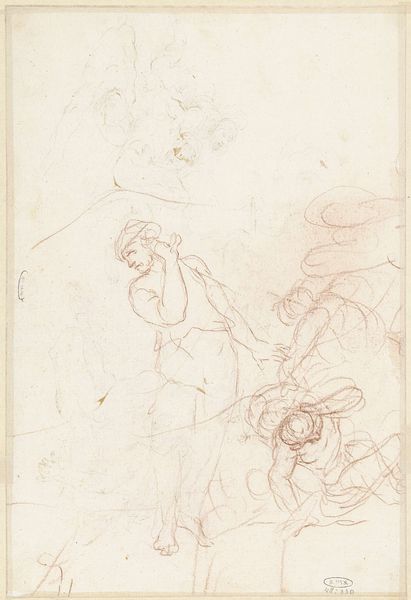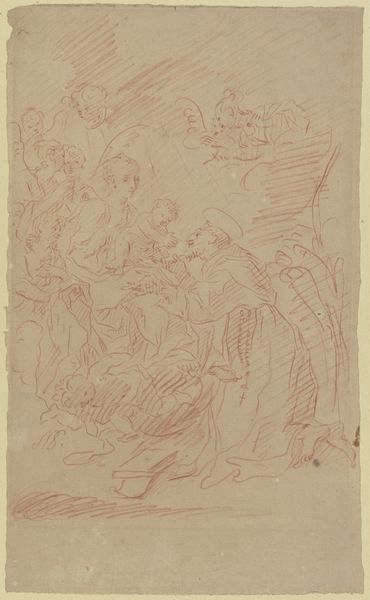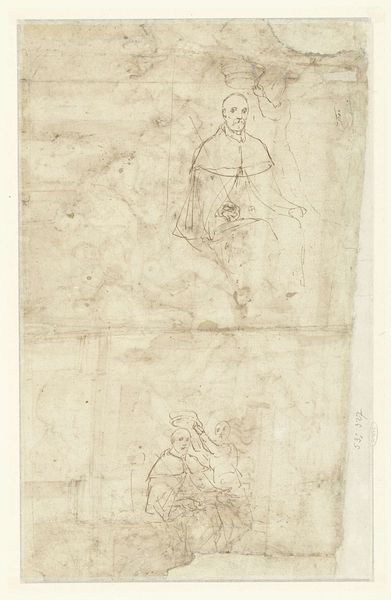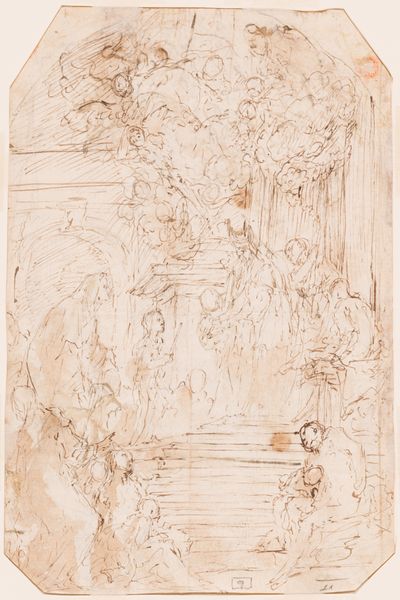
Studieblad met liggende Jesse en een zittende Madonna 1475 - 1500
0:00
0:00
drawing, paper, pencil
#
portrait
#
drawing
#
figuration
#
paper
#
11_renaissance
#
pencil
#
nude
#
early-renaissance
Dimensions: height 218 mm, width 126 mm
Copyright: Rijks Museum: Open Domain
Curator: Here we have an intriguing piece, "Studieblad met liggende Jesse en een zittende Madonna," or "Study Sheet with reclining Jesse and a seated Madonna." It’s an early Renaissance drawing rendered in pencil on paper, dating from about 1475 to 1500, and attributed to the Master of the Coburg Roundels. Editor: It feels immediate, doesn't it? Raw. Almost like catching the artist in the act of sketching initial concepts. The humble materials really foreground the labor involved. Curator: Precisely! The loose sketch of Jesse relates to traditional representations of the "Tree of Jesse," tracing Christ’s lineage, while the Madonna and Child presents complex issues of female agency and depictions of motherhood in the late fifteenth century. What social structures informed these images, particularly for a work intended as study? Editor: Considering the visible texture of the paper, one has to wonder about the availability and cost of materials. Was this sheet meant for practice, a preliminary sketch, or something more? What was the source of the paper itself? That influences how we see it, versus, say, a fresco. It challenges our notion of "preciousness," doesn't it? Curator: Absolutely. And looking closer, how does the depiction of nudity for Jesse contrast with the Madonna’s veiled presentation, both signaling differing societal expectations regarding male and female bodies? Editor: It all comes back to that tension between the idealized religious subjects and the evident materiality. That Madonna's drapery has this wonderfully simple almost textile like feel which gives way to the material poverty implied by a working drawing like this one. What does it reveal about artistic workshops and the distribution of artistic labor during that era? The paper's visible wear points to active engagement and potentially collective use. Curator: Right, shifting our understanding from individual genius to collaborative making. This work becomes a valuable insight into Early Renaissance societal structures and production processes. Editor: This work asks us to reconsider art history from a new angle, away from an idealistic rendering towards real social processes and contexts.
Comments
No comments
Be the first to comment and join the conversation on the ultimate creative platform.
